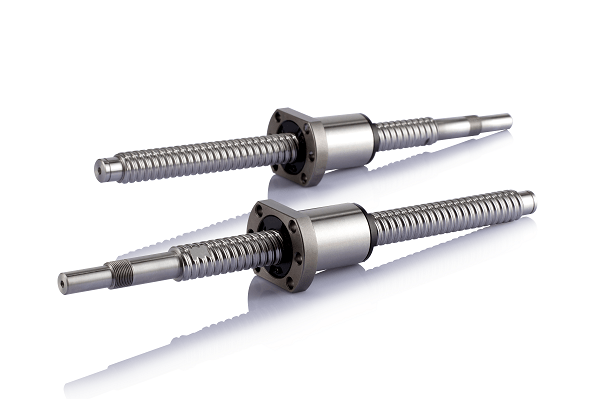
A ball screw is a high-efficiency method of converting rotary motion to linear motion. It’s able to do this by using a recirculating ball mechanism between the screw shaft and the nut. There are many different types of ball screw, each with their own uses and advantages.
Different types of ball screws
There are a wide variety of applications and uses for ball screws, with two main types chosen by manufacturers:
Precision ground ball screw
Difference between rolled ball screw and precision ground ball screw
The first difference between rolled ball screws and precision ground ball screws is their fabrication process. Ground ball screws are created through an abrasion process, in which an abrasive cutter moves along the length of the horizontally positioned blank, carving out threads of the screw.
Rolled ball screws are manufactured using rotating tool dies in which the blank is pushed back and forth between the dies. This helps to shape the threads in the screw, and is popular because of its high efficiency.
When comparing cost, there is a considerable difference between rolled ball screws and precision ground screws. Because of their efficiency, rolled ball screws are usually more cost-effective than ground screws. However, ground screws are often preferred for machinery that requires high precision because they offer more accuracy than rolled screws.
When it comes to comparing accuracy, ground ball screws are superior to rolled ball screws because the threads are crafted more precisely and smoothly than its counterpart. When a screw is more accurate, the nut moves smoothly along the shaft.
Pros and cons of ball screws
There are two main benefits of using ball screws: efficiency and low friction. A ball screw offers a high level of mechanical efficiency. Statistics show that they can deliver up to 90% efficiency compared to lead screws, which offer an efficiency of between 20% and 25%.
Ball screws also produce minimal friction, which is ideal for producing a smooth application. They’re designed with a nut in which ball bearings circulate and create a smooth gliding surface for the screw. This reduces friction and increases the ball screw’s lifespan.
There are other benefits to using ball screws too, which are:
1)Higher accuracy grades for greater positional accuracy
2)Available in rolled and ground types
3)Can be adjusted to increase/decrease preload
4)Need to be replaced less frequently
5)Available in screw diameters from 4mm to 80mm
In terms of the negatives of ball screws, there are only really two: their susceptibility to be back-driven and their cost.
Since ball screws create such low friction, they can be back-driven at certain lead angles.
Ball screws can also be slightly more expensive than other options. They tend to cost slightly more than similar mechanical devices, including lead screws. So for manufacturing companies on tighter budgets, the higher cost may be a deterrent.
However, because of their clear advantages of superior mechanical efficiency and low internal friction, ball screws are still a very popular choice for many manufacturers and are a wise investment.
Post time: Jan-10-2024






